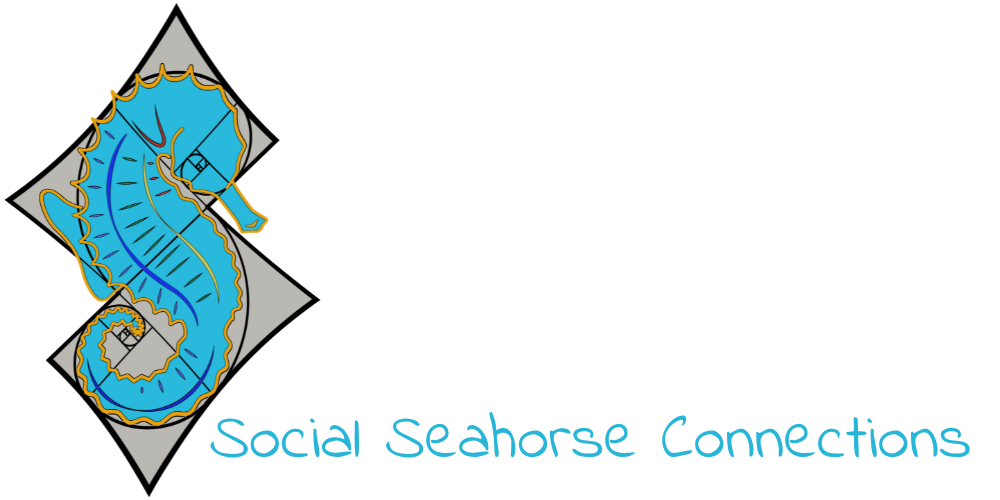
Tri-State Hiking: A story of going into the woods alone during the pandemic and coming out with 27K friends.
As a 9-year-old leads me through a cave, I think about other first-time hiking experiences I’ve had over the past few years due to the participation in an unusually active and successful hiking group I joined during the pandemic.
Hiking in the pouring rain, which was surprisingly calming and beautiful.
Crunching through freshly fallen snow on a trail that opened out onto a lake.
Creek stomping for miles to a waterfall.
Looking to the trail across the ravine and seeing the people at the end of the group of about 40 people as the trail does a horseshoe loop and we can all see one another at once.
Donning headlamps and taking the trail to the waterfall to see what it looks like in the light of a full moon.
I have always had a love for connecting to nature, and when I joined the group to do a winter hike in the snow, I thought my main reason was, well, to hike.
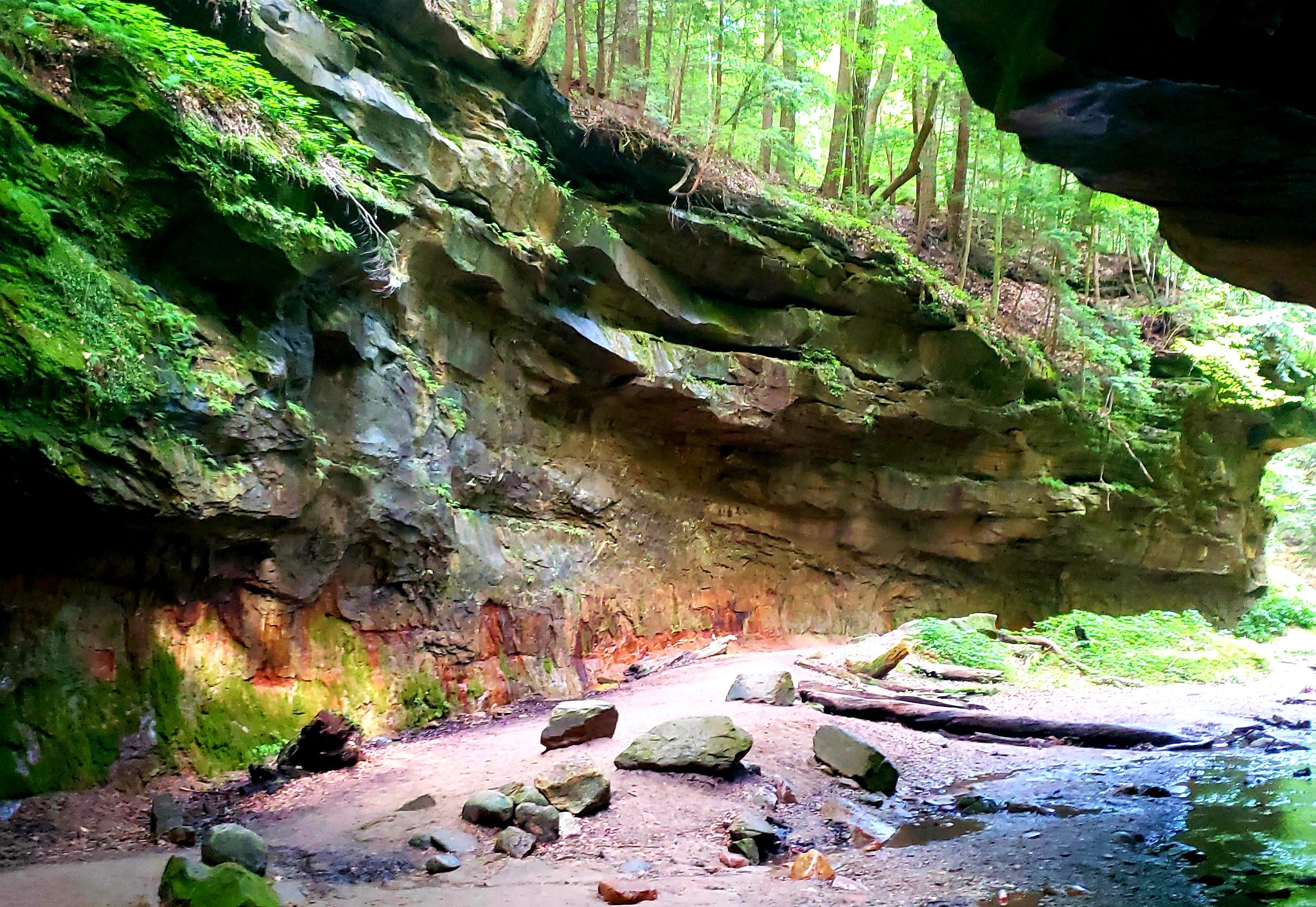
Ravine in Turkey Run State Park, Indiana
Hiking leader makes shocking statement:
Then one of the hiking leaders whose hikes I like the best made a shocking statement that went something like this: “This group’s primary purpose isn’t hiking, it’s connecting with other people.”
Now, others in the group might disagree with that, but as I thought about what he said, I realized that was exactly the element that made this group so popular – 27,000 members popular.
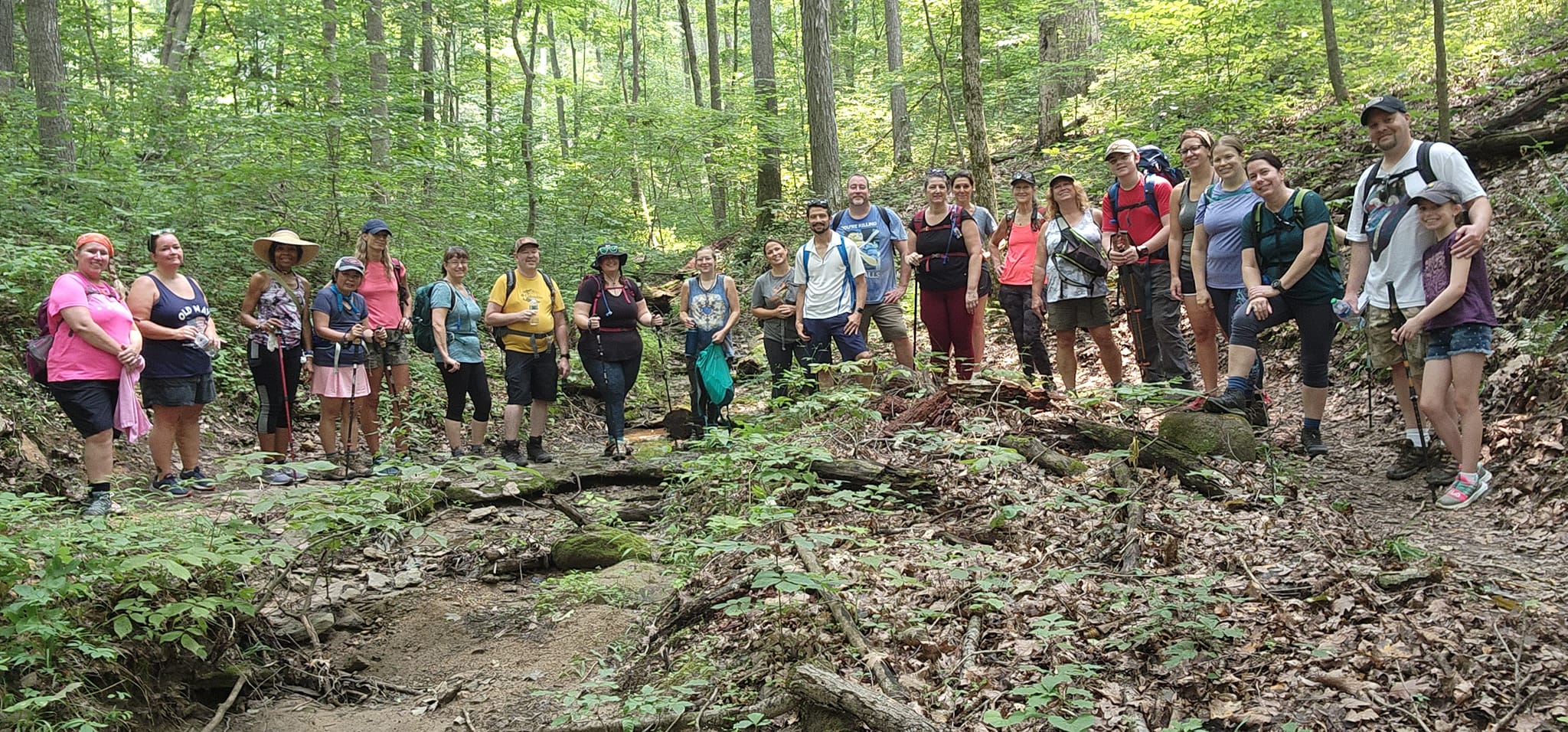
Anniversary Hike at Versailles State Park, Indiana.
History of a hiking group
What was one to do during the peak of the pandemic?
For Nick Buchanan it was to go into the woods and hike – like every day. He wanted others to join him but found few takers. One day, someone suggested he should create an event group through Facebook; she even agreed to do all the initial set up. And, the rest, as they say, is history.
In just a few short years, the group has swelled to over 27,000 members. That’s a lot of social value being created!
The initial impact can be attributed to a strong start around a genuine need for people to get outside (where it was safer to interact during the pandemic) and the value of inviting others to join in.
Let’s take a look at what else contributes to bringing together those who usually do intense-level hiking with those who have never hiked a single trail before.
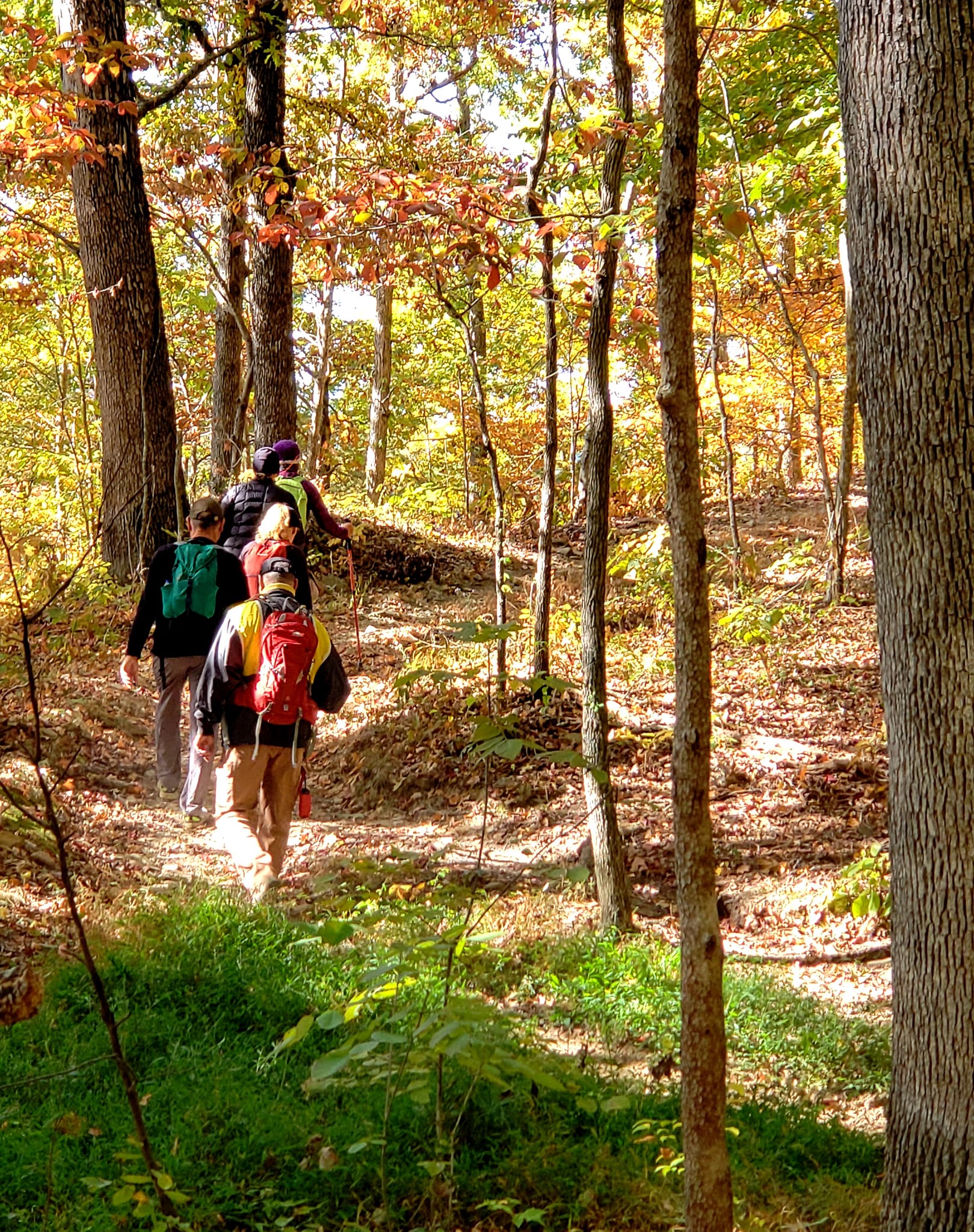
Small group hike at Cave Run Lake, Kentucky.
Shared experiences
As the years have passed, the group celebrates each year’s milestone with anniversary hikes – in all three states covered: Indiana, Kentucky, and Ohio. Often, people stay overnight in a state park lodge or nearby accommodations.
This allows for evening walks through the local town after dinner, card games in the lodge gathering room, and opportunities to sit and visit.
Food is a powerful tool for bringing people together, and it’s not unusual for a hike to include meeting to eat at a local spot afterwards. Eating together breaks down barriers and creates human connections.
Inclusion
Everyone is welcome on hikes and others are always there to give a boost up a rock scramble or hold your trekking poles while you descend one of the ladders at Turkey Run State Park in Indiana.
Yet, the group also recognizes that someone who has never hiked before might just find a 12-mile hike in steep terrain miserable. And, someone who regularly hikes 12-miles in steep terrain might just find a slow-paced, 2-mile hike miserable.
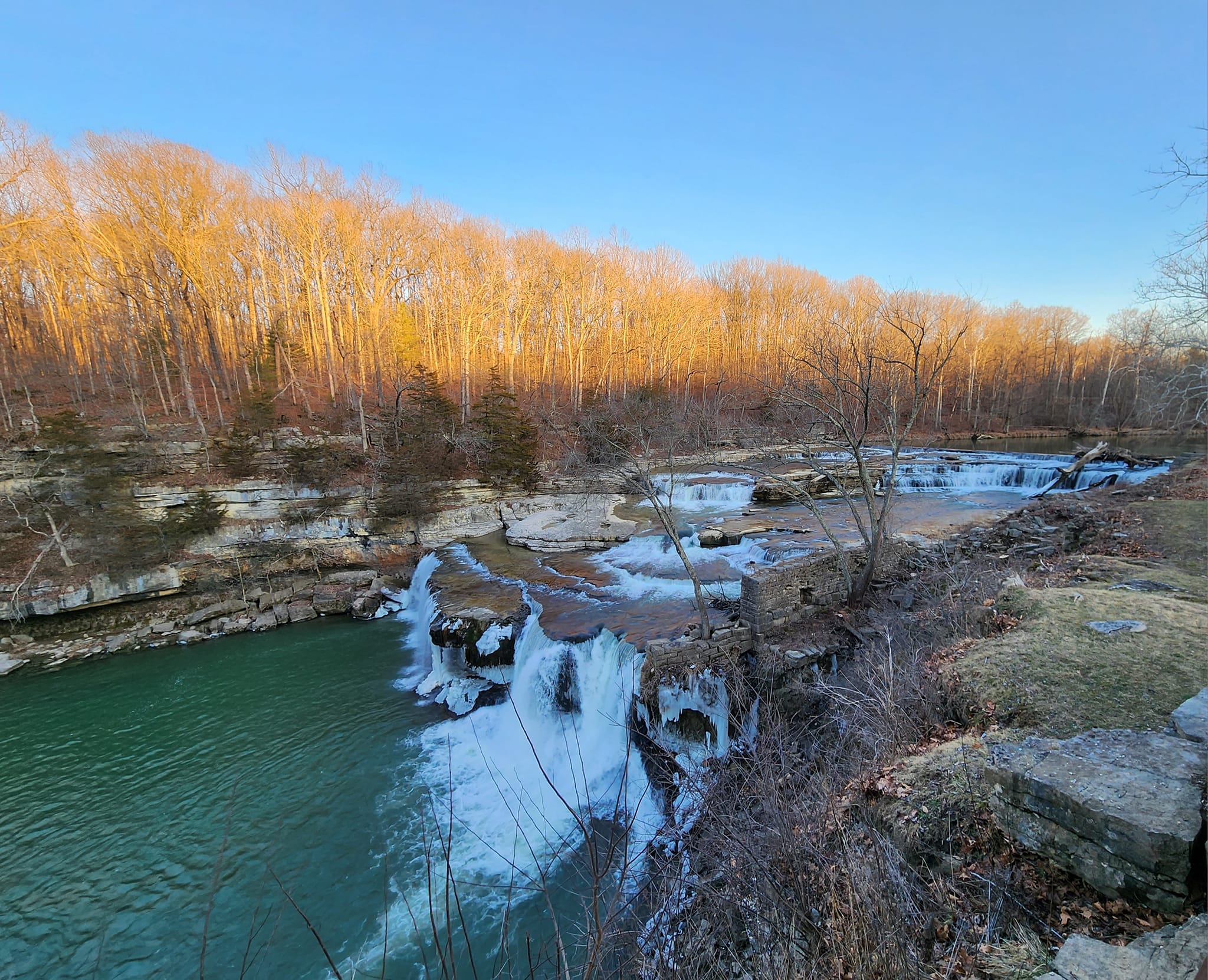
Partially frozen waterfall at Cataract Falls, Indiana
The clear information provided for hikes lets participants know what to expect. Estimated milage, terrain, pace, and maps are usually given in the event description. Honoring others’ abilities in this way while also giving them the autonomy to make their own choices goes a long way in creating social bonds of trust and respect.
When a lot of people show interest in an event, which usually happens for the anniversary hikes when everyone wants to celebrate, leaders step up to divide the group so that each ability level can participate at a pace that’s comfortable.
Another particularly wise approach is planning the hike in sections in which each section ends at the parking lot. So, you might do 3 miles and when you get to the parking lot, those who want to be done can take off; others proceed on together. No one feels uncomfortable about “giving up,” and they don’t have to worry about finding their own way back to their car.
The group also allows anyone to create an event. Support is given on what to communicate and how to post it to the Facebook events page. Everyone is empowered to lead the kind of hikes they want to do and gather like-minded hikers with them. The support provided results in everyone having the opportunity to lead the kind of hike they want.
Slow-paced, child-friendly, women-only, “butt-kicker,” and singles-only hikes are regular options.
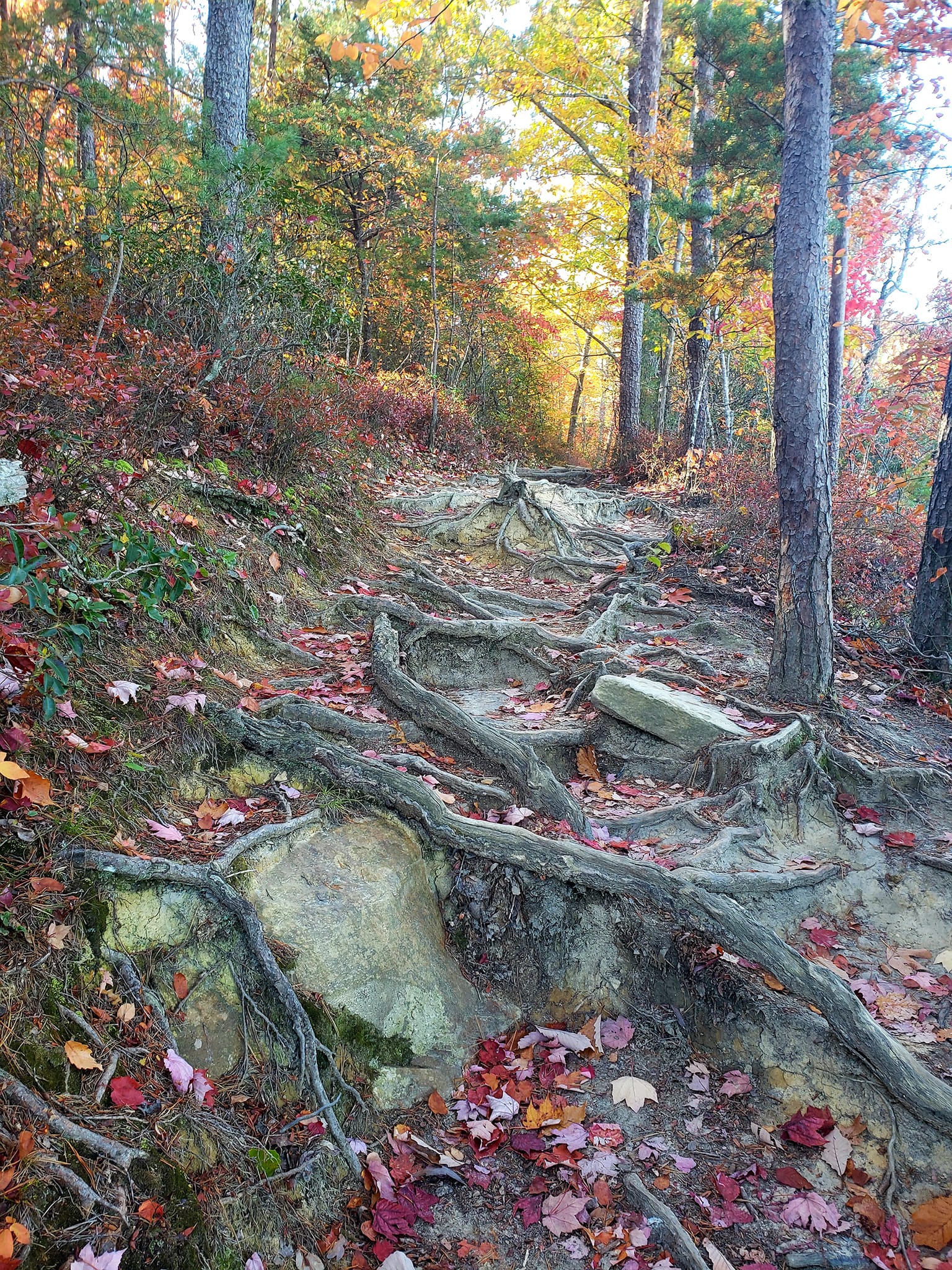
Fall hike at Red River Gorge, Kentucky
Leadership who listens
Nick takes a personal interest, often sending morning messages of well-wishes to the group signed up for an event along with a reminder to take and share photos. He notices and celebrates those who step up to lead hikes.
He also listens to what the group needs. Someone recently asked in a post what keeps introverts from attending hikes. (Later a similar post asked for extrovert feedback.) Afterwards, Nick highlighted upcoming hikes in the next week with small attendance for those who had said that as an introvert, they don’t want to end up on a large group hike.
Perhaps one of the main reasons membership far exceeds those who actually attend hikes is that information and
photos are freely shared.
Sometimes groups hoard information about the best hiking spots, trip reports, and logistical information like where to park for a trailhead, but Tri-State Hiking freely shares, and people from all over the country come to the site to find out about hiking in Indiana, Kentucky, and Ohio.
Get out in nature, together
Getting out in nature positively affects both one’s physical and mental health, and doing it with others provides community and connection with others that increases the social value available.
I encourage you to check out your local hiking groups or if you are in the tri-state area, check out Tri-State Hiking Events Group (IN*KY*OH).
Golden Connection Challenge:
Whatever types of outdoor groups you participate in – hiking, cycling, kayaking, running, walking, etc. – consider how you can help increase the social value of the group.
What steps can you take to ensure everyone is included and supported? This could be something as involved as discussing the group culture with leadership or something simple like taking the time to talk to someone who is new to an event.
